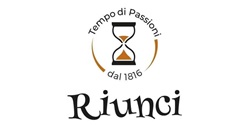The Unique Process of Fermenting Vermentino in Marble Barrels
MASSA CARRARA – An innovative approach to wine fermentation is emerging from Italy, blending the elegance of marble with the art of winemaking. Nicola Del Nero and Lino Cybeo have pioneered a unique method of fermenting wine in marble barrels, promising unparalleled freshness and quality.
The concept, which might initially seem fanciful, has been brought to life at the Giacomelli winery, owned by Roberto Petacchi, just beyond the Ligurian border. For several weeks now, a marble barrel has been a fixture in their cellars. Originally conceived by the late sculptor Alessandro Mosti and completed by his family after his passing, this marble barrel exemplifies an intriguing fusion of tradition and innovation.
The use of marble in food preservation isn’t entirely new—consider the basins used for aging Colonnata lard—but employing marble as a fermentation vessel for wine is a novel application. This idea germinated from discussions between Daniele Del Nero, owner of Le Palme restaurant in Marina, and Lino Cybeo of the Carrara-based marble company bearing his name. They found a willing collaborator in the Giacomelli winery to explore the potential of this marble-wine synergy, aiming to create a truly unique product.
The marble block used was initially a hefty 2.8 tons before being hollowed out to accommodate the wine, reducing its weight by approximately half. Following standard procedures, the interior was treated with resin, and the fermentation process commenced several weeks ago. Cybeo emphasized the use of reclaimed marble to avoid impacting the mountains, highlighting their commitment to sustainability.
The marble barrel is filled with a blend of 60% Vermentino and 40% Trebbiano. According to the winery’s oenologist, this blend proved to be the most suitable after extensive testing. “Marble provides excellent insulation, maintaining a consistent temperature, which we’ve found influences the wine’s evolution differently compared to traditional materials like steel or concrete,” explains Roberto Petacchi. “The wine retains a freshness that would be lost with other materials.”
Currently, only a few hundred bottles of this unique wine are available at Le Palme restaurant, under the label ‘Marmo DiVino.’ Nicola Del Nero is optimistic about the venture. “We conducted various tests and experiments over the past months to determine if the idea was viable. Vermentino pairs well with marble, and this first marble barrel is just the beginning—we hope to create more in the future.”
The marriage of marble and wine represents a bold step forward in winemaking, combining centuries-old materials with contemporary techniques. For wine enthusiasts and professionals alike, this innovative approach offers a fresh perspective on fermentation, promising a distinctive tasting experience that bridges the past and the future.










